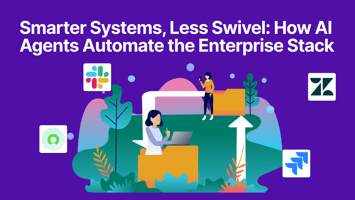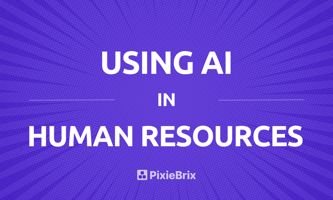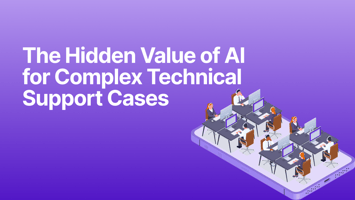From Chatbots to Agents: The Enterprise Shift Has Begun The hype around AI in the workplace often...
Orchestration Is the Missing Link in Your AI Strategy

Your AI Isn’t Failing - It’s Fragmented
Most enterprises now have AI. They’ve fine-tuned models, embedded LLMs into chatbots, and layered copilots into apps. Yet business impact often lags behind investment.
The missing link? Orchestration.
Without orchestration, AI stays siloed - trapped in single tools, teams, or workflows. Orchestration connects models to outcomes. It integrates logic, context, and action across the enterprise stack.
What Is AI Orchestration?
AI orchestration refers to the coordination of AI models, data flows, business logic, and user interactions across tools and systems. It ensures AI doesn't just run - but runs in the right context, at the right moment, with the right effect.
Think of it like the conductor in a symphony:
-
The models are instruments.
-
The tools are the stage.
-
The business workflow is the score.
-
Orchestration makes it all coherent.
Why Orchestration Matters
AI Without Orchestration
-
LLM responds in a chatbot but can’t update the ticket in Salesforce.
-
Anomaly detection flags an issue but doesn’t trigger remediation.
-
A support assistant suggests a reply but can’t file a Jira ticket.
With Orchestration
-
AI reads ticket data, classifies the issue, triggers a workflow, and routes follow-up tasks across teams.
Value comes not just from intelligence, but from execution.
Enterprise Use Cases for AI Orchestration
Support Automation
Combine classification models, decision logic, and backend triggers:
Triage → Suggest reply → File Jira → Update ticket → Notify customer
IT & Ops Workflows
Use orchestration to turn insights into action:
Monitor logs → Detect outage → Trigger escalation → Route fix → Post incident summary
Data-Driven Approvals & Compliance
Chain together data extraction, validation, and business rules:
Flag anomaly → Retrieve metadata → Route to finance lead → Auto-log in GRC tool
Common Pitfalls When Orchestration Is Missing
| Problem | Result |
|---|---|
| Disconnected tools | AI insights never trigger downstream actions |
| Lack of visibility | Teams don’t trust or adopt AI |
| Manual glue code | Engineering time wasted on brittle integrations |
| Stalled pilots | AI never reaches production value |
What to Look for in an Orchestration Platform
-
Multi-step workflows: Chain logic across apps, APIs, and DOM.
-
Triggering capabilities: React to screen changes, form states, or backend signals.
-
Contextual awareness: Understand what the user is doing and adapt.
-
Role-based execution: Secure actions based on user identity or team.
-
Hybrid control: Combine no-code, low-code, and developer hooks.
Platforms like PixieBrix enable orchestration in the browser, where many enterprise workflows still live.
What is orchestration in the context of AI?
It’s the coordination of models, tools, logic, and data to turn AI outputs into real business actions.
How is orchestration different from integration?
Integrations connect tools. Orchestration defines when and how things should work together across a workflow.
Why do AI pilots fail without orchestration?
Because insights alone don’t drive outcomes. Without orchestration, actions stall or require manual intervention.
Can orchestration work without deep backend integration?
Yes. Browser-native platforms like PixieBrix allow orchestration through UI logic and context-aware triggers.
Is orchestration just for IT?
No. It’s for any team that wants to automate cross-tool work: support, ops, finance, compliance, HR, and more.


